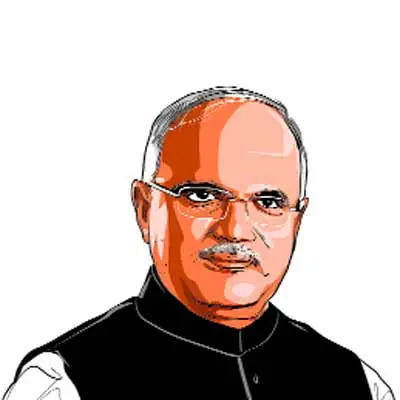Opinion Ram temple in Ayodhya is just the start of India’s cultural renaissance
As India marks the 350th anniversary of Chhatrapati Shivaji Maharaj's coronation, the centenary of Mumbai’s iconic Gateway of India and the centennial celebrations of the Vaikom Satyagraha this year, a new journey begins for the Indic spirit
 Workers stand in front of the under construction site of the Ram Temple in Ayodhya, December 29, 2023. (Reuters)
Workers stand in front of the under construction site of the Ram Temple in Ayodhya, December 29, 2023. (Reuters) As we usher in 2024, India is on the cusp of a cultural renaissance. Apart from the consecration of Lord Rama’s idol at the newly constructed Ram Temple, the 350th anniversary of Chhatrapati Shivaji Maharaj’s coronation, the centenary of Mumbai’s iconic Gateway of India and the centennial celebrations of the Vaikom Satyagraha — the first ever struggle against caste discrimination — are significant events this year.
The consecration of the Ram idol at the newly built Ram Janmabhoomi Temple at Ayodhya shouldn’t be seen as a mere religious event. True, Hindus worship Ram. But just as the Ramayana and the Mahabharata are India’s national epics, Ram is our national hero. Visit any part of the country and you will find Ram in people’s names – from Ramachandran, Ramanathan, Ramayya or Ramappa in the South to Rambhai, Ramsingh or Ramsharan in the North. While the debate around the historicity of the Ramayana will continue, it is a fact that Ram in particular and the Ramayana in general reflect the essentially Hindu/Indian belief that every individual has some elements of divinity within him/her — a foundational principle that Hindus often forget and so face the threat of fragmentation. Ram symbolises the core of the Indic value system that is founded on a humanitarian approach.
The Ram temple in Ayodhya is a turning point in India’s cultural history. A society always at the receiving end of the injustice and atrocities of aggressors will liberate itself. This temple is a symbol of our ability to protect our self-respect. The resurrection of the Ram Temple in 2024 can be compared only with the resurrection of the Somnath temple in the 1950s. What is being constructed in Ayodhya is not just a temple of brick and mortar but a monument saluting the civilisational journey of India. India, as once described by Kerala Governor Arif Mohammad Khan, is a country that is always ageing but is never old. This spirit finds its majestic manifestations in the temple that is currently getting its final shape. PM Modi has aptly appealed to countrymen to light a lamp on this day as the light of the eternally relevant message of Ram’s life and mission reaches all.
Meanwhile, in observing the 350th anniversary of the coronation of Chhatrapati Shivaji Maharaj, we will be celebrating a philosopher king. For, Shivaji was much more than a warrior king or a great strategist. His era is a watershed in Indian history — a testament to the resolve of Indians to challenge aggressors. Shivaji Maharaj sowed the seeds of self-confidence amongst the masses while also emboldening the rajas and maharajas of the time to summon the political will to take on invaders. Protecting indigenous culture from the assaults of invaders is one of the key messages of his life. Shivaji Maharaj’s life inspired many of our freedom-fighters, including Veer Savarkar.
The iconic Gateway of India in Mumbai marks the first-ever visit of a British monarch to India, then a colony of the Britishers. The monument today is a symbol of India’s growing global influence.
While many in the West continue to struggle to effectively deal with multiculturalism, in India this is inbuilt in our traditions. The Dalai Lama had once said, “India’s great tradition of religious tolerance can be a role model for the entire world”. It is important to remember this at a time when mindless Westernisation/Americanisation is eroding the rich cultures of several small countries, especially in the southern hemisphere. Several developing countries with distinct cultures, traditions and values, different from those of the West, feel hopelessly dependent on the latter for economic development. In the process, they invite a cultural flattening of sorts. The Gateway of India’s centenary should be a reminder that India needs to give a clarion call for what External Affairs Minister S Jaishankar recently described as “cultural re-balancing”. Indigenous cultures must protect themselves from the threat of distortion.
For our cultural renaissance to attain its truest meaning we have to collectively rise above smaller identities, especially those related to caste and community. Therein lies the significance of the Vaikom Satyagraha whose centenary we will observe this year. It was remarkable because of the large-scale participation of the so-called forward castes. On October 1, 1924, a group of people belonging to the forward castes submitted a petition to the Regent Maharani Sethu Lakshmi Bayi of Travancore. The petition asking to open the doors of the temple to everyone carried about 25,000 signatures and Mahatma Gandhi had endorsed the demand of the petitioners. After much persuasion, the Maharani relented.
From Vaikom to Ayodhya, the Hindu community has come a long way. In seeking the presence of the priests of the Valmiki and Ravi Das temple at the consecration ceremony slated for January 22 and naming the Ayodhya Dham Airport after Maharishi Valmiki, a loud and clear message of social assimilation, justice and harmony has gone out — this is what was envisioned by Babasaheb Ambedkar.
It is heartening to hear Farooq Abdullah say, “Ram doesn’t belong only to the Hindus. He belongs to all”. This is a great transformation indeed. It would have been wonderful if Babur had realised this as well. By destroying the Ram temple, he crippled the soul of Bharat, a land of ekam sat vipra bahuda vadanti (god is one but wise men describe him in different ways).
The writer is president, Indian Council for Cultural Relations, former national vice-president of the BJP and MP, Rajya Sabha




